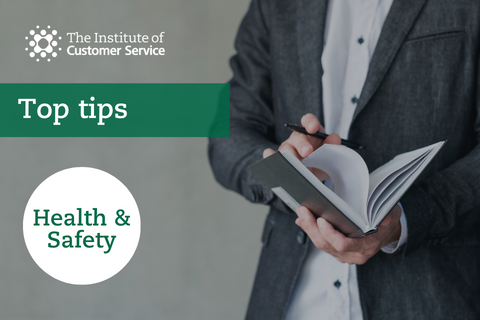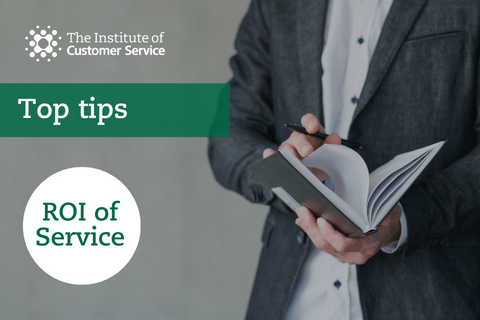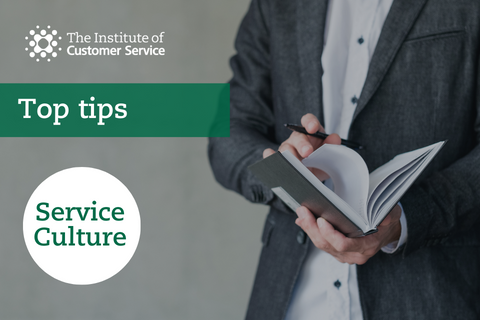Throughout the COVID-19 epidemic, some employees are required to attend their workplace or travel to perform their role. Often they are delivering essential services that are essential customers and society as a whole. We have drawn on a range of global sources and The Institute’s research to provide an overview and guidance to help keep your employees safe in a range of working environments.
1) Make sure you have conducted a risk assessment appropriate to your workplaces
- Assess the risk and potential impact if an infected person (either an employee or customer) enters your workplace
- Consider which areas, surfaces or equipment customers and employees come into contact with most
- Assess the size of your workplace and the maximum number of people it can accommodate to preserve the 2 metre social distancing rule
- Identify what personal protective equipment (PPE) may be required and what is available
- Identify individuals who may be at highest risk either because of pre- existing health conditions or the nature of the work they perform
- Create a formal plan documenting the risks and how the risks are being mitigated
- Monitor government rules and guidance and update your risk assessment as required
2) Promote personal hygiene and the facilities to enable it
Give clear guidance to employees and customers about requirements for personal hygiene including:
Frequent hand washing with soap and water
- Covering your mouth if coughing or sneezing, preferably with a tissue
- Disposing of tissues in appropriate rubbish bins
- Washing hair and clothes thoroughly every day
- Make available toilet / washroom facilities to enable personal hygiene, with provision of soap, water, toilet paper and hand sanitiser. Make sure the facilities are kept clean and in good working order.
3) Make sure regular and thorough cleaning is undertaken
- Provide employees with surface wipes to clean workstations, equipment such as monitors, phones, keyboards and mouses
- Conduct regular sanitising of frequently touched surfaces including door handles, stairwells, trolleys, baskets, conveyer belts, card machines, checkout areas, vending machines
- Wherever possible, wear disposable or washing-up gloves and aprons for cleaning. These should be double-bagged, then stored securely for 72 hours then thrown away in the regular rubbish after cleaning is finished
- The minimum PPE to be worn for cleaning an area where a person with possible or confirmed coronavirus (COVID-19) is disposable gloves and an apron. Hands should be washed with soap and water for 20 seconds after all PPE has been removed.
- If a risk assessment of the setting indicates that a higher level of virus may be present consult the local Public Health England (PHE) Health Protection Team (HPT)
4) Communicate and consult proactively with employees
Organisations should communicate clearly with their employees about working arrangements and safety measures, setting out what is expected of employees, answering queries and providing guidance. Organisations should also consult with their employees, especially on changes to job roles or working patterns. Managers should also remind employees that they too have a duty to take reasonable care for their own health and safety and to not adversely affect the health and safety of others.
In particular, employees need to know:
- Any changes to their job role, objectives and required performance standards
- Current health and safety practices
- Any changes to the organisation’s sickness policy
- What action to take if they become unwell or see someone who is unwell
- What symptoms to be concerned about.
- Support that is available to discuss their concerns or access help and advice
5) Enable social distancing in areas open to the public (such as supermarkets)
- Identify the upper limit on the number of employees and customers who can be in the premises at any one time based on the available floor space, and the requirement for people to be 2 metres apart
- Create markings or signage so that customers who are queuing stand at least 2 metres apart
- Provide suitable screening around checkouts where possible
- Create a space around self-service tills so that there is at least 2 metres distance between customers
- Request that customers make contactless payment where possible
- Use separate doors for entry and exit where possible
- Rotate employee tasks to ensure that no one person has disproportionately more close contact with customers
- Make sure that employee breakrooms have sufficient space for social distancing of at least 2 metres and encourage employees to adhere to distancing rules
- Place signs in the premises to remind customers about social distancing and only to handle products that they intend to buy
6) Enable social distancing in an office environment (such as a call centre)
If it is not possible for employees to perform their roles at home:
- Identify the upper limit on the number of employees who can be in the premises at any one time based on the available floor space and the requirement for people to be 2 metres apart
- Assess the area required around each workspace of workstation to allow employees to perform their role whilst enabling social distancing of at lest 2 metres. Mark out the areas to remind employees
- Manage shift rotas and opening times to reduce the number of people on the premises and limit the number of people any individual will come into contact with, for example by scheduling consistent shift teams
- Make sure that employee breakrooms have sufficient space for social distancing of at least 2 metres and encourage employees to adhere to distancing rules
7) Enable social distancing on site (such as a construction site or warehouse)
- Limit the number of employees on site at any one time, for example by organising morning / afternoon shifts, revising work schedules or enabling employees to work from home where it is possible
- Limit the amount of physical interaction between employees and others attending, such as suppliers
- Encourage people to communicate on site by mobile phone or radio
- Create designated walkways on the site to maintain physical separation.
- Stagger break times to reduce the number of people gathering in one area
- Make sure that employee breakrooms have sufficient space for social distancing of at least 2 metres and encourage employees to adhere to distancing rules
- Conduct meetings online or through an app where possible. If physical meetings on site are required, make sure they are held in a space which allows for social distancing of at least 2 metres
- Limit the number of workers using essential equipment at any one time
- Encourage employees to use stairs rather than a hoist / lift when it is safe to do so
- Place signs on site to remind employees about social distancing practice and reinforce care and vigilance about health and safety
8) Practise social distancing when providing service at customer’s premises (such as essential maintenance or repair)
- Regularly clean and disinfect the vehicle and surfaces including steering wheel, door handles, buttons and keys
- Clean and disinfect mobile phones or devices used to schedule and record deliveries
- Be careful to continually practise personal hygiene including regular washing of hands. Avoid touching your mouth, eyes, and nose with unwashed or gloved hands
- Cover the nose and mouth when coughing and sneezing with a tissue and dispose of tissues in a bin
- Maintain a distance of at least 2 metres from others
- Wash hands using alcohol-based hand rub before and after handling food deliveries or parcels. If using gloves, use an alcohol-based hand rub before touching the gloves and once more after taking them off
- If an electronic signature is required, use an alcohol-based hand rub before and after the delivery. Wipe down all equipment, for example, with disinfectant wipes, including the pen and the electronic device used to obtain the signature
9) Travelling to and from work
Encourage employees to use alternatives to public transport where possible
If employees need to use public transport to travel to a place of work, where possible schedule work patterns so that employees don’t need to travel at peak times
Remind employees to maintain social distancing, if possible, during their journey and to wash or sanitise hands before and after travelling on public transport.
10) Dealing with abusive customers
Most customers will understand that during the COVID-10 lockdown, many organisations are under pressure to maintain standards of service, may have reduced staff numbers and that employees are striving to do their best for customers in challenging circumstances. However, it’s possible that some customers my be angry about reduced levels of service or be unwilling to modify their expectations or behavior. Sometimes this can spill over into abusive or unacceptable behavior.
Employees should acknowledge and respond to customers who are exhibiting strong emotions, seek to understand the customer’s concern and identify a solution or way forward. At the same time, everyone – employee or customer – deserves to be treated with consideration and respect.
Organisations can help both employees and customers through the following:
- Advise employees to follow existing guidelines for dealing with abusive customers, albeit recognising that both customers and employees may be experiencing high levels of stress because of the extraordinary circumstances
- Be transparent with customers about service limitations and advise them about the best way to engage with the organization during this time
- Remind customers that many employees are continuing travel to work to maintain essential services and deserve appropriate respect
- If necessary, deploy security personnel to ensure the safety of employees and customers
12) Promote awareness and provide support for mental health and well-being
- Encourage employees proactively manage their mental health and well-being and make sure they are aware of the support your organisation provides including line manager support, information resources, an employee helpline or counselling service.
- If formal support is limited in the organisation is limited, or employees would prefer to access support independently, make people aware of trusted sources of advice. The NHS has published information about how to manage anxiety and a range of recommended helplines and organisations.
Key tips include:
- Make time for daily exercise, either going for a walk or physical stretching exercises at home. There are plenty of online tutorials and clips with exercise routines you can follow
- Do things you enjoy in your spare time. Practise a favourite hoppy, learn a new skill, read, play or listen to music to help you relax
- Eat healthy, well-balanced meals, drink enough water and try to avoid smoking, alcohol and drugs
- Try to maintain regular sleeping patterns and keep up good sleep hygiene practices, like avoiding screens before bed, cutting back on caffeine and creating a restful environment
- Use reputable and trusted sources of information to access information about the virus and its impact, such as gov.uk , the NHS website or the BBC. Consider limiting the amount of time that you expose yourself to news coverage of the epidemic
- Connect with others, through the telephone, online applications such as Zoom, FaceTime or WhatsApp
We hope these top tips are useful and we’d love to hear your feedback. Should you have any questions you would like to ask us on this topic, or for more information about our how we are helping our members stay connected, please do get in touch.
Sources consulted:
https://www.safeworkaustralia.gov.au/covid-19-information-workplaces/preparing-workplaces-covid-19
https://www.gov.uk/government/publications/guidance-to-employers-and-businesses-about-covid-19


